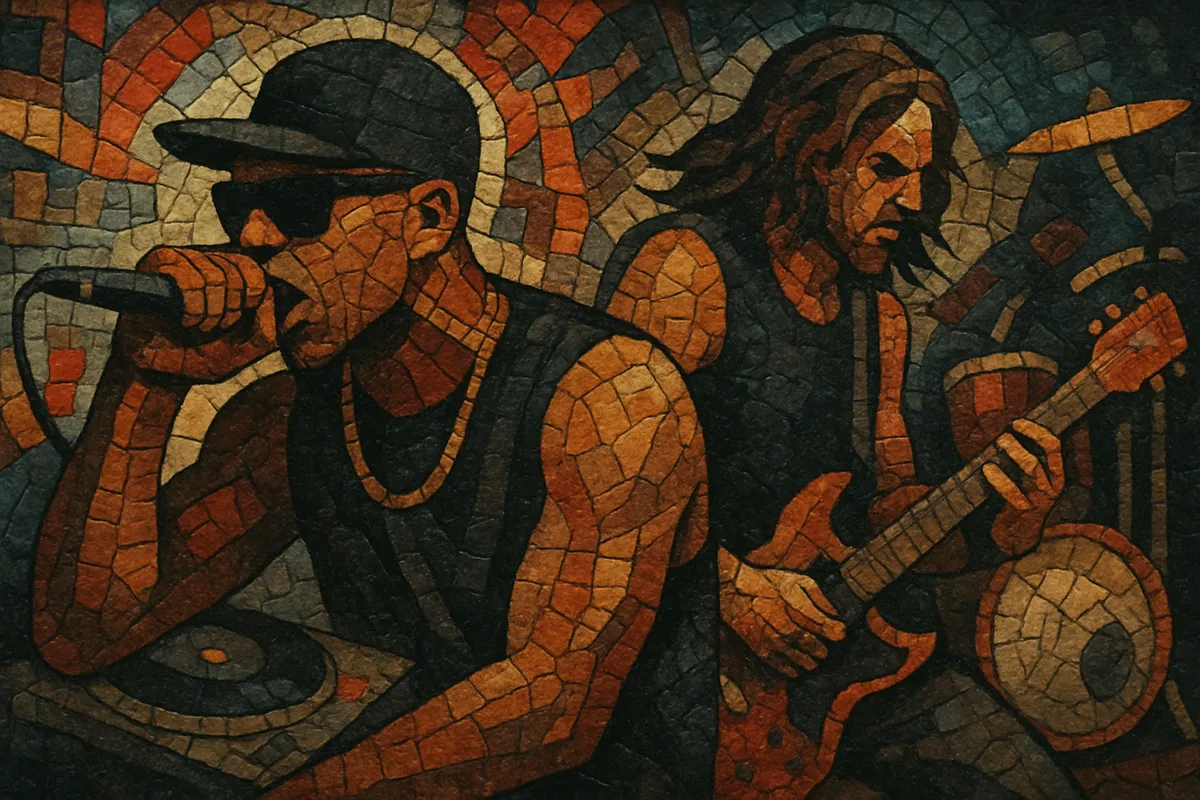Rap rock is a hybrid style that blends hip hop’s rhythmic, rhymed vocal delivery with rock’s amplified guitars, bass, and live drums.
Typical tracks feature MC-style verses over groove-heavy riffs or power-chord progressions, often punctuated by turntable scratching, sampled breaks, and big, sung (or shouted) chorus hooks. The harmony is usually riff- and mode-centric rather than complex, while the rhythm section locks to hip hop backbeats or halftime feels. Lyrical themes range from political and social critique to personal angst and party bravado.
The style emerged in the mid-1980s and surged through the 1990s–2000s, proving that rap cadences and rock energy could coexist in stadium-sized anthems.
Rap rock’s foundations were laid when hip hop’s MCing met electric guitar-driven rock in the early-to-mid 1980s. Rick Rubin–produced crossover moments (like LL Cool J’s rock-tinged beats) hinted at the potential, and the watershed came with Run-DMC and Aerosmith’s 1986 remake of “Walk This Way,” which put rap verses over a classic rock riff on mainstream radio and MTV. Meanwhile, Beastie Boys’ License to Ill (1986) used rock samples, riffs, and a bandlike attitude to push hip hop into rock spaces.
Faith No More’s “Epic” (1989) and Anthrax/Public Enemy’s “Bring the Noise” (1991) showed two viable templates: band-first rap rock with funk-metal underpinnings, and direct rap/metal collaborations. Rage Against the Machine’s 1992 debut then codified a politically charged, groove-centric approach with Tom Morello’s DJ-like guitar textures, placing rapped verses against heavy, cyclical riffs and live breakbeats.
The style exploded commercially through bands that blended rap verses with big, melodic choruses and down-tuned guitars: 311, Limp Bizkit, Kid Rock, P.O.D., Papa Roach, and especially Linkin Park, whose Hybrid Theory (2000) made rap rock a global phenomenon. Radio formats and festivals embraced the sound, while producers fused hip hop production (sampling, scratching) with rock arrangements.
Though the early-2000s boom cooled, rap rock’s DNA spread widely. It informed nu metal’s rise, persisted via acts like Hollywood Undead, and seeped into punk rap and later trap-metal hybrids. Contemporary artists continue to merge rap cadences with guitar-driven hooks, while classic rap rock recordings remain staples of sports arenas and activist soundtracks alike.


